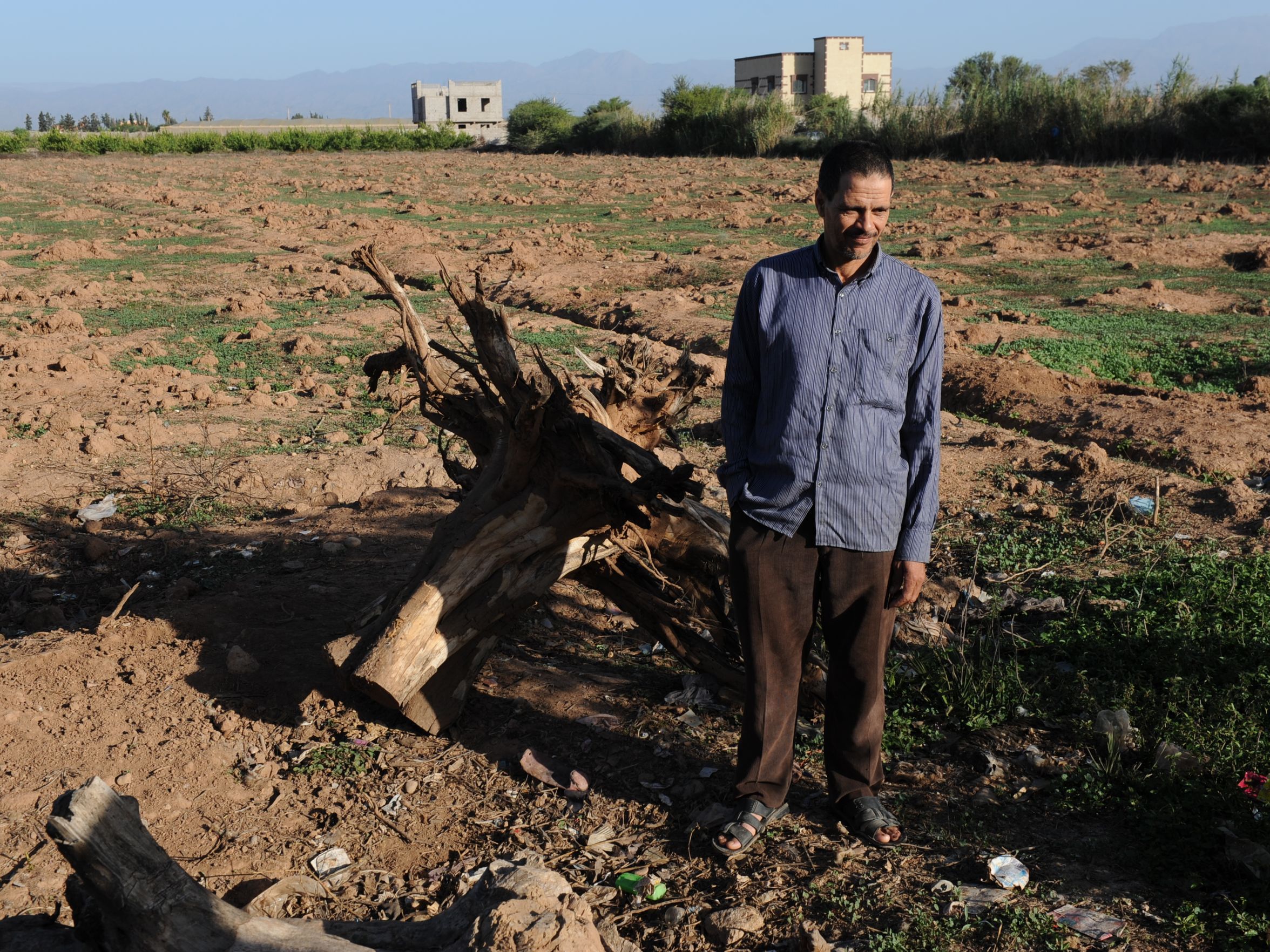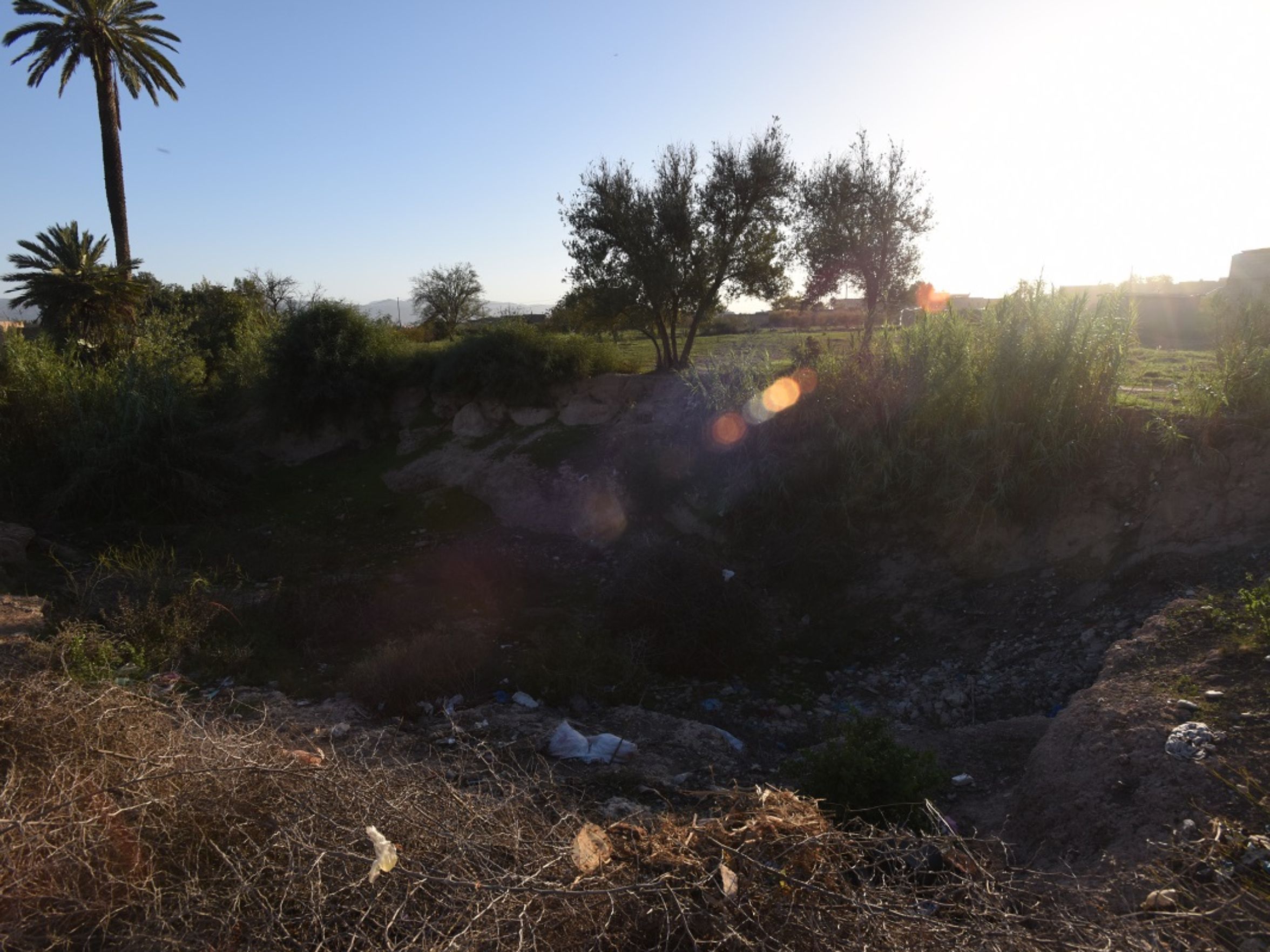SEBT EL GUERDANE, Morocco – On a plot of farmland where goats wander among the weeds, a two-story house made of stone and concrete looks out over what was once a lush grove of orange trees. Now those trees have been ripped from the ground, leaving bare earth and dead stumps.
Groundwater has been severely overpumped by farms in Morocco’s Souss-Massa region, and the water table has fallen dramatically. When the family’s well dried up, their farm was transformed into barren land.
The orange grove’s disappearance nearly five years ago eliminated the main source of income for Mbarek Belkadi, his three brothers, and their families. They’ve turned to whatever work they can find, often buying and selling fruit. Earning enough to survive has become a constant struggle.
“All this land was irrigated with this well. Now it’s dead,” Mbarek said, standing beside piles of dry branches. “It’s finished here.”
Read the full story and view the full interactive presentation with photos and video here.





